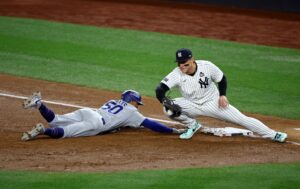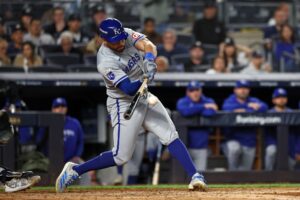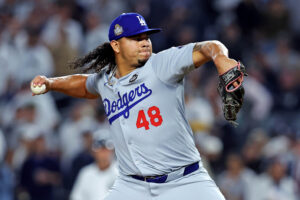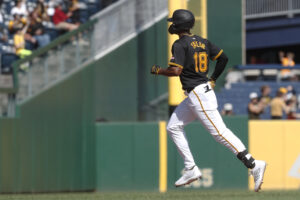“The Big Red Machine” Makes Its Presence Known in 1975
Looking back throughout the course of baseball history, an argument can be made that the 1975 Cincinnati Reds were one of the greatest teams to ever play the game of baseball. That season the Reds had a very formidable team and one that came during the era of “The Big Red Machine.”
There were a lot of things that made the 1975 Cincinnati Reds team successful. From a pitching standpoint, the team was impressive, especially in regard to the bullpen. As a staff, the Reds posted a 3.37 ERA that season. Furthermore, the offense was potent for the time posting a cumulative batting line of .271/.353/.401. When you combine that altogether, it resulted in a 108-54 record and a World Series appearance for Cincinnati, members of the National League West at the time.
In the game of baseball, it takes an entire team for success to happen. Unlike some other sports, there has to be multiple contributors for a team to be successful. For the 1975 Cincinnati Reds, that was true in many regards. Below is a look at some of the impactful members of the 1975 Reds squad.
1. Potent Offensive Core
Part of what made “The Big Red Machine” so great was its potent offense. The 1975 season was a great illustration of that. During the 1975 season, the Reds had Pete Rose as their leadoff hitter. Rose played in 162 games that season, batting .317/.406/.432 over the span of 764 plate appearances and led all of baseball with 210 hits and 47 doubles.
While Rose made his presence felt at the top of the batting order, the most impactful hitter that season was second baseman Joe Morgan. During the 1975 season, Morgan earned an All-Star selection, won the National League Most Valuable Player Award, and won his third consecutive Gold Glove Award. That season Morgan led all of baseball with 132 walks and a .974 OPS.
Besides Joe Morgan, two other key parts of the Cincinnati Reds middle of the order during the 1975 season were catcher Johnny Bench and first baseman Tony Perez. Bench was 27 years old during the 1975 season and put up a 6.6 Wins Above Replacement value that season. What made Johnny Bench so impressive was his ability to find a way to put the ball in play. Despite having a career high 108 strikeouts in 1975, Bench was still a very impactful hitter in an array of different scenarios at the plate.
Another key cog of the Cincinnati Reds lineup during the 1975 season was the aforementioned Tony Perez. Perez was yet another All-Star on the Reds roster that season and ended the season with 20 home runs, 109 RBI, and a OPS+ of 124. For Perez, the 1975 season was a big one and that helped the Reds to find length within their own lineup.
2. Subpar Starting Rotation
One of the more surprising qualities about the 1975 Cincinnati Reds is that the team didn’t have that much of a dominating starting rotation. Usually, when a team has a dominant season like the 1975 Reds, the team features a potent lineup along with very good starting pitching. However, the Reds found a way to outscore their opponents that season and basically overcome a lackluster starting rotation.
As a unit during the 1975 season, the Reds starting rotation posted a 3.57 ERA over 1,007 2/3 innings of work. Instead of relying on five primary starting pitchers, the Reds had a rotation composed of six different starters. However, the Reds displayed some new-school “bullpenning” that year with many of the starters being used as hybrid pitchers between the rotation and bullpen.
The strikeout leader in the rotation was 32-year-old left-hander Fred Norman, who recorded 119 strikeouts over 26 games that year. Despite that, the most impactful member of the starting rotation during the 1975 season for the Reds was left-hander Don Gullett. Gullett made a total of 22 starts that season, posting a 2.42 ERA and an ERA+ of 149 during that span.
In fact, Gullett was so effective in 1975 that he finished fifth in National League Cy Young Award voting. Additionally, Gullett shone in high-leverage situations. In those situations, which accounted for approximately 141 plate appearances that season, Gullett held opposing batters to a slash line of .179/.281/.239.
Gullett’s most important performance that season, however, came during Game Seven of the World Series. Gullett wasn’t overly impressive during Game Seven, pitching four innings and surrendering three earned runs and five walks to a hungry Boston Red Sox team.
3. Bullpen Was Very Impressive
During the course of the Cincinnati Reds franchise, there have been some impressive bullpen groupings. However, the 1975 Cincinnati Reds bullpen might be among the best groupings ever. As a unit, the 1975 Reds bullpen posted a 2.69 ERA over 402 1/3 innings of work. What was so incredible, though, was the fact that Cincinnati primarily relied on four different relievers.
Rawly Eastwick was the Reds closer that season and finished the year with a 2.60 ERA over 90 innings pitched. Eastwick demonstrated during many occasions that he could handle high-pressure situations. The second half of the 1975 season was where Eastwick excelled. From August through the end of the season, Eastwick posted a 1.16 ERA over 34 relief appearances while holding opponents to a .207 Batting Average Against.
While Eastwick was an important member of the bullpen that year, from a workload standpoint no one could beat right-hander Pedro Borbon. During 1975 alone, Borbon recorded 125 innings of relief, posting a 2.95 ERA along with a 3.32 FIP (Fielding Independent Pitching). The 1975 season was only a portion of the impressive amount of work that Borbon put together during the 1970s.
Reds manager Sparky Anderson earned the nickname “Captain Hook.” He became famous for using almost his entire pitching staff especially during the postseason. Therefore, having multiple impact options made for plenty of “Captain Hook” moments for Anderson.
A Special Team
In the end, the 1975 Cincinnati Reds team was a very special one at that. During the 1970s, “The Big Red Machine” was a vital part of baseball, and the 1975 season was a clear illustration of how impactful that offensive core was. With a subpar starting rotation and a overly impressive bullpen group, the Reds found a way to make it to the World Series that year and end the season with a ring on their fingers.
For the Cincinnati Reds, that’s all that mattered at the time. It was the first World Series Championship for the franchise since 1940, but it was the start of something great in baseball history. The Reds went on to win the 1976 World Series as well. That made them the last National League team to date to win back-to-back World Series titles.
Main Photo
Embed from Getty Images






